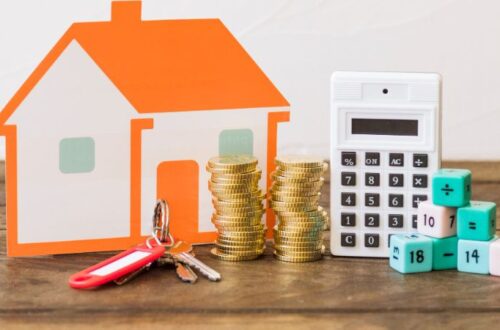Sustainable Living Tips For Homeowners – Sustainable living has become increasingly vital in the face of environmental challenges. For homeowners, adopting sustainable practices not only reduces their ecological footprint but also promotes healthier, more efficient living spaces. Sustainable living encompasses various aspects, including energy efficiency, water conservation, waste reduction, and mindful consumption.
By making conscious choices in their daily lives, homeowners can contribute to global efforts to mitigate climate change and preserve natural resources. In this guide, we’ll explore practical tips and strategies for homeowners to embrace sustainability in their homes.
From simple changes like installing energy-efficient appliances to larger initiatives such as incorporating renewable energy sources, there are numerous ways for homeowners to make a positive impact on the environment. By implementing these sustainable living practices, homeowners can create healthier, more eco-friendly homes while inspiring others in their communities to join the movement towards a more sustainable future.
Sustainable Living Tips For Homeowners
Energy Efficiency:

Improving energy efficiency is crucial for reducing your home’s carbon footprint and lowering utility bills. Start by replacing old appliances with Energy Star-certified models, which are designed to consume less energy.
LED light bulbs are another easy swap, as they use up to 80% less energy than traditional incandescent bulbs and last much longer. Smart thermostats allow you to control your heating and cooling systems more efficiently, adjusting settings based on your schedule and preferences to save energy without sacrificing comfort.
Also, Read – DIY home repair hacks for homeowners
Renewable Energy:
Transitioning to renewable energy sources like solar or wind power can further reduce your reliance on fossil fuels and decrease greenhouse gas emissions. Wind turbines harness wind energy to create power, whereas solar panels use sunlight to create electricity.
Both options can be installed on your property, providing a clean and renewable source of energy to supplement or even replace grid electricity. In many areas, there are government incentives and financing options available to make renewable energy systems more affordable for homeowners.
Water Conservation:
Conserving water is essential for preserving this precious resource and reducing strain on freshwater ecosystems. Installing low-flow fixtures such as faucets, showerheads, and toilets can significantly decrease water usage without sacrificing performance.
Fixing leaks promptly is also crucial, as even small drips can waste significant amounts of water over time. Additionally, consider collecting rainwater in barrels or cisterns for irrigation purposes, reducing the need for potable water in your yard and garden.
Composting:

Composting organic waste is an effective way to divert food scraps, yard trimmings, and other biodegradable materials from landfills. Compost bins or piles create ideal conditions for natural decomposition, producing nutrient-rich soil amendment that can be used to nourish plants in your garden.
By composting, you not only reduce methane emissions from decomposing organic matter in landfills but also enrich your soil and promote healthier plant growth without relying on synthetic fertilizers.
Sustainable Landscaping:
Adopting sustainable landscaping practices can help conserve water, support local biodiversity, and reduce maintenance requirements. Choose native plants that are well-adapted to your climate and soil conditions, as they typically require less water and maintenance compared to exotic species.
Minimize the use of chemical pesticides and fertilizers, opting for organic alternatives or integrated pest management techniques instead. Incorporating mulch and ground covers can also help retain soil moisture, suppress weeds, and improve overall soil health.
Reduce, Reuse, Recycle:
The mantra of “reduce, reuse, recycle” serves as a guiding principle for minimizing waste and conserving resources. Start by reducing your consumption and avoiding single-use items whenever possible. Reuse items by repairing, repurposing, or donating them instead of discarding them prematurely.
When disposal is necessary, prioritize recycling materials such as paper, cardboard, plastic, glass, and metal to divert them from landfills and conserve raw materials for future use.
Energy-Efficient Insulation:
Proper insulation is essential for maintaining a comfortable indoor environment while minimizing energy waste. Insulate walls, attics, floors, and crawl spaces to prevent heat loss in winter and heat gain in summer. Seal gaps and cracks around windows, doors, and ductwork to prevent drafts and air leaks.
Consider upgrading to energy-efficient windows and doors with double or triple-pane glass and insulated frames for better thermal performance. By improving insulation and air sealing, you can reduce your heating and cooling costs while enhancing overall comfort and indoor air quality.
Green Transportation:
Choosing eco-friendly transportation options can significantly reduce your carbon footprint and promote cleaner air quality in your community. Opt for walking or biking for short trips whenever feasible, reducing the need for car travel and improving personal fitness.
Carpooling or ridesharing with neighbors, coworkers, or friends can also help minimize vehicle emissions and traffic congestion. When driving is necessary, consider using a fuel-efficient or electric vehicle to reduce greenhouse gas emissions and dependence on fossil fuels.
Eco-Friendly Materials:
Selecting sustainable and non-toxic materials for home renovation and furnishing projects is essential for minimizing environmental impact and promoting healthier indoor air quality. Bamboo is a rapidly renewable resource that can be used for flooring, cabinetry, and furniture, offering durability and natural beauty. Reclaimed wood salvaged from old buildings or furniture can add character and charm to your home while reducing the demand for virgin timber.
Recycled glass countertops and tiles provide a stylish and eco-friendly alternative to traditional materials, diverting waste from landfills and conserving energy in production. Low-VOC (volatile organic compound) paints and finishes emit fewer harmful chemicals, improving indoor air quality and reducing health risks for occupants.
Reduce Single-Use Plastics:

Single-use plastics pose significant environmental challenges due to their persistence in the environment and detrimental effects on wildlife and ecosystems.
Minimize your use of disposable plastic products by switching to reusable alternatives wherever possible. Stainless steel water bottles, glass food storage containers, and cloth grocery bags are convenient and eco-friendly substitutes for single-use plastic items.
Choose products with minimal or recyclable packaging to reduce waste generation and encourage a more circular economy. By adopting plastic-free habits and supporting businesses that prioritize sustainability, you can help combat plastic pollution and protect marine life for future generations.
Conclusion
Conclusion: Incorporating sustainable practices into homeownership is not only beneficial for the environment but also enhances quality of life. By following the tips outlined in this guide, homeowners can reduce their carbon footprint, conserve resources, and save money in the long run.
Every small change adds up to make a significant difference in creating a more sustainable world. Let’s continue to prioritize sustainability in our homes and communities, empowering ourselves and future generations to live harmoniously with the planet. Together, we can build a greener, healthier, and more resilient future for all.
FAQs
Why is sustainable living important for homeowners?
Sustainable living helps homeowners reduce their environmental impact, save money on utilities, and create healthier living spaces for themselves and their families. It also contributes to global efforts to mitigate climate change and preserve natural resources for future generations.
How can I make my home more energy-efficient?
You can improve your home’s energy efficiency by installing insulation, using energy-efficient appliances, sealing air leaks, and incorporating renewable energy sources such as solar panels or wind turbines.






